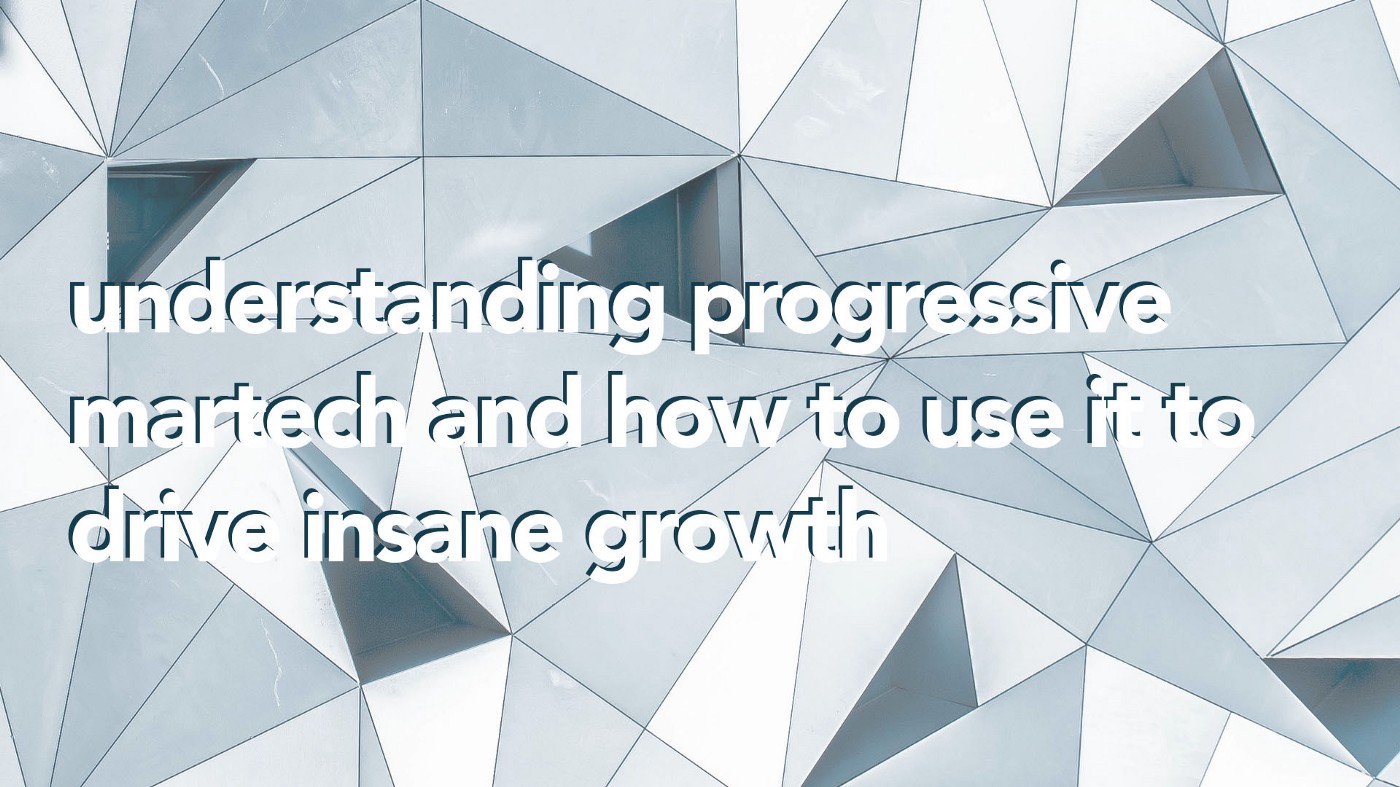Published by
Look at any of the top CMO reports of 2021 and there is a good chance martech will be somewhere towards the top of CMO’s strategic initiatives for this year. Gartner defines “martech”, or “marketing technology”, as a set of software solutions used by marketing leaders to support mission critical business objectives and drive innovation within their organizations (1). As with any space, especially one so rooted in technology, it is rapidly evolving and the landscape beneath the feet of marketing leaders is shifting as a result. This is primarily being driven by three forces:
- The introduction of mobile first tools built from the ground up in the last decade and digital product teams’ rapid adoption of them, putting them closer to the messaging campaigns that are typically managed by marketing teams.
- The increased focus on first party data, a dataset that is often managed by digital product teams, by brands in response to privacy developments to continue driving personalization and messaging campaigns in a cookie-less and IDFA-less world.
- The never-ending need for speed within the campaigns and digital product features being launched and the insights that teams need to understand their next move.
These forces pushing on marketing and product management teams meant that something new was needed to support the new dynamic between these teams and the tools they use to drive growth so they can achieve greater outcomes for the businesses they support. The effects of this push over the last decade and the collision course that it put marketing and product management teams on, have led to some of these groups pioneering new ways of working by leveraging these new tools and creating new processes which give them increased speed, functionality, and agility to drive growth around. These new ways of working and the tools that are used to action on these strategies have broadened the definition of how these groups see martech.
To these forward-thinking groups, martech is more than just a set of software solutions and isn’t something that is only for marketing leaders to drive growth from but instead is a platform for the entire business to drive growth from as a collective whole. It’s a platform where product and marketing teams act as a single cohesive unit that bakes engagement into the foundation of the digital products they manage, and product led thinking is used as a strategic force to enhance campaigns, giving them extra horsepower so they can better convince consumers to become customers.
This broadened perspective and the ability of certain teams to reach for more has created a new paradigm within the martech world which is best categorized as “progressive martech”. There are four cornerstones with specific criteria that teams need to meet to be considered a progressive martech team.
- Tools — Tools in the martech stack are selected using a best-in-breed approach as opposed to legacy or all-in-one.
- Team — Both marketing and product management teams act as a single cohesive unit on the stack to drive growth as opposed to simply the marketing team going at it alone.
- Data — There is a pervasive single customer view that recognizes customers across all channels, this data is available to all teams from their main tool and it natively integrates back into ad networks to improve re-targeting and look alike audience modeling.
- Execution — Rapid and automated lifecycle campaigns with consistent personalization across all channels and the ability to test and optimize for outcomes within them.
The Tools Progressive Martech Teams Use
When it comes to the tools teams put together to create their martech stacks, there are generally three different categories that these stacks fall into based upon their makeup:
- Legacy
- All-In-One
- Best-in-Breed.
A legacy martech stack is best characterized as a chaotic mess of both homegrown solutions and a sizable list of point solutions that were originally built prior to the explosion of mobile in 2008. Customer data often resides in many different systems, personalization and targeting of campaign messages comes from these systems resulting in a disjointed customer experience that feels different to customers across the different channels they interact with (email versus app, versus website for example). At best, these stacks are stitched together by an array of backend scripts that batch syncs customer data to the other systems in the ecosystem in arrears
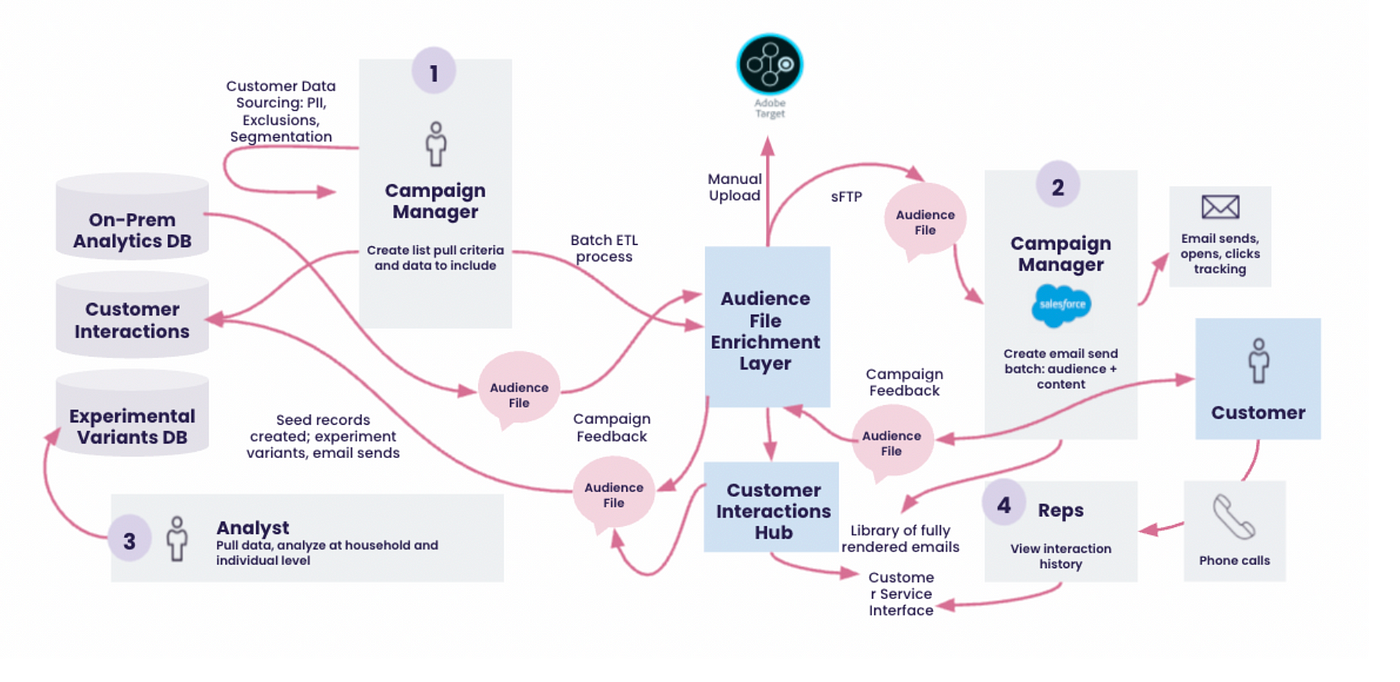
All-in-one martech stacks are best characterized as a single cloud vendor that provides an integrated suite of tools that allows marketing teams to have a single view of the customer and to be able to action on this data all from the same place. All the core components of your stack from the CDP to Product Analytics to the Engagement Platform will be fulfilled by the same provider. These vendors typically provide a range of solutions that integrate well if you stay within the boundaries of their own ecosystem. However, if you try sending segmented analytics data from Adobe’s stack into a Google Ads Remarketing audience, you will find it can be an unnecessarily complex and painful process for example (2). Further, you will often see cutting edge advancements come out after their best-of-breed counterparts have proven the technology out in the market due to the fact they can move faster and with more focus. Adobe coming out with a CDP after Simon Data had been in the market for many years is a good example of this.
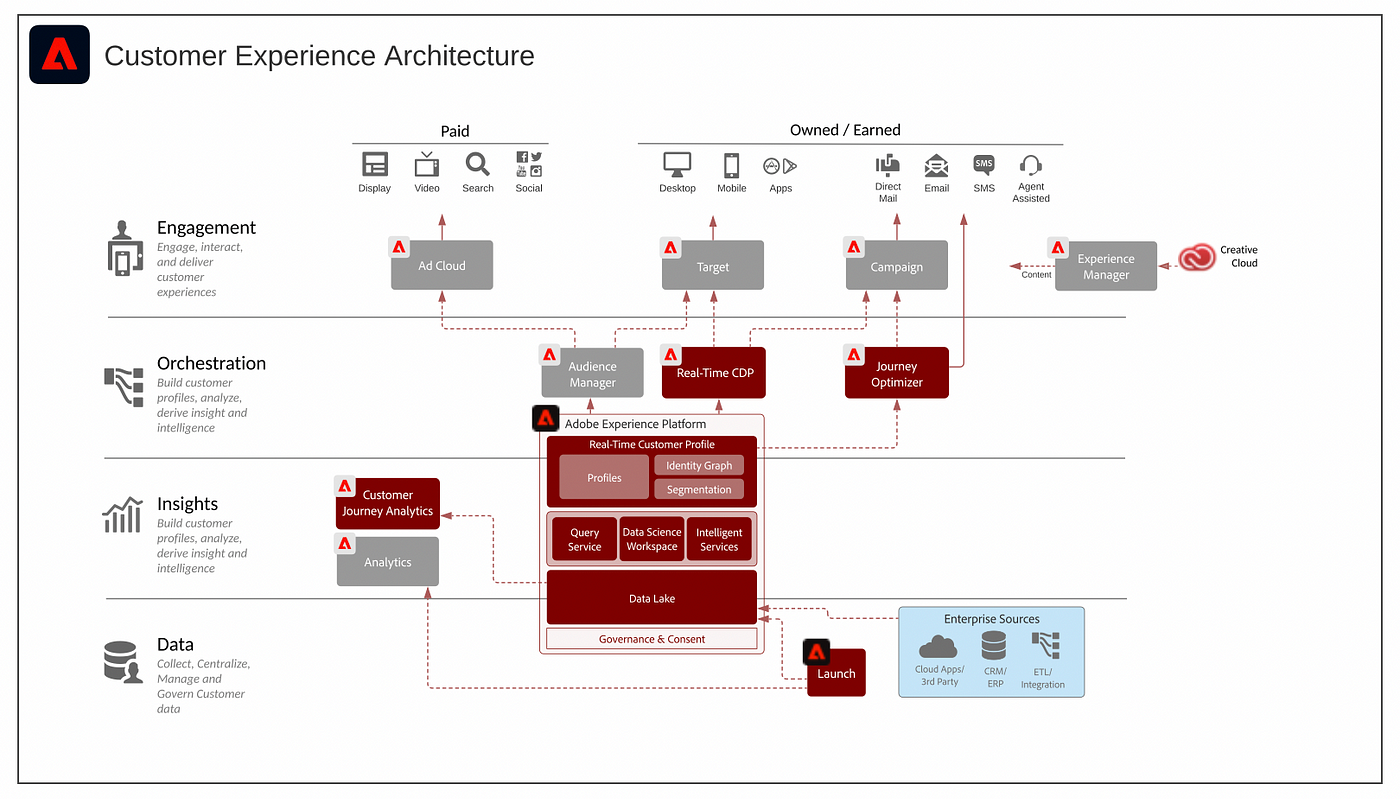
A best-of-breed martech stack is best characterized as a stack that was designed from the ground up, without the constraints of pulling along the legacy or all-in-one system into the future. Roles in the stack are filled by the market leaders in each category as opposed to a one size fits all approach that is strong in some areas but lacking in others. The result is the creation of a “best of breed” stack where organizations select different technology components to build a unique stack tailored to their business needs.
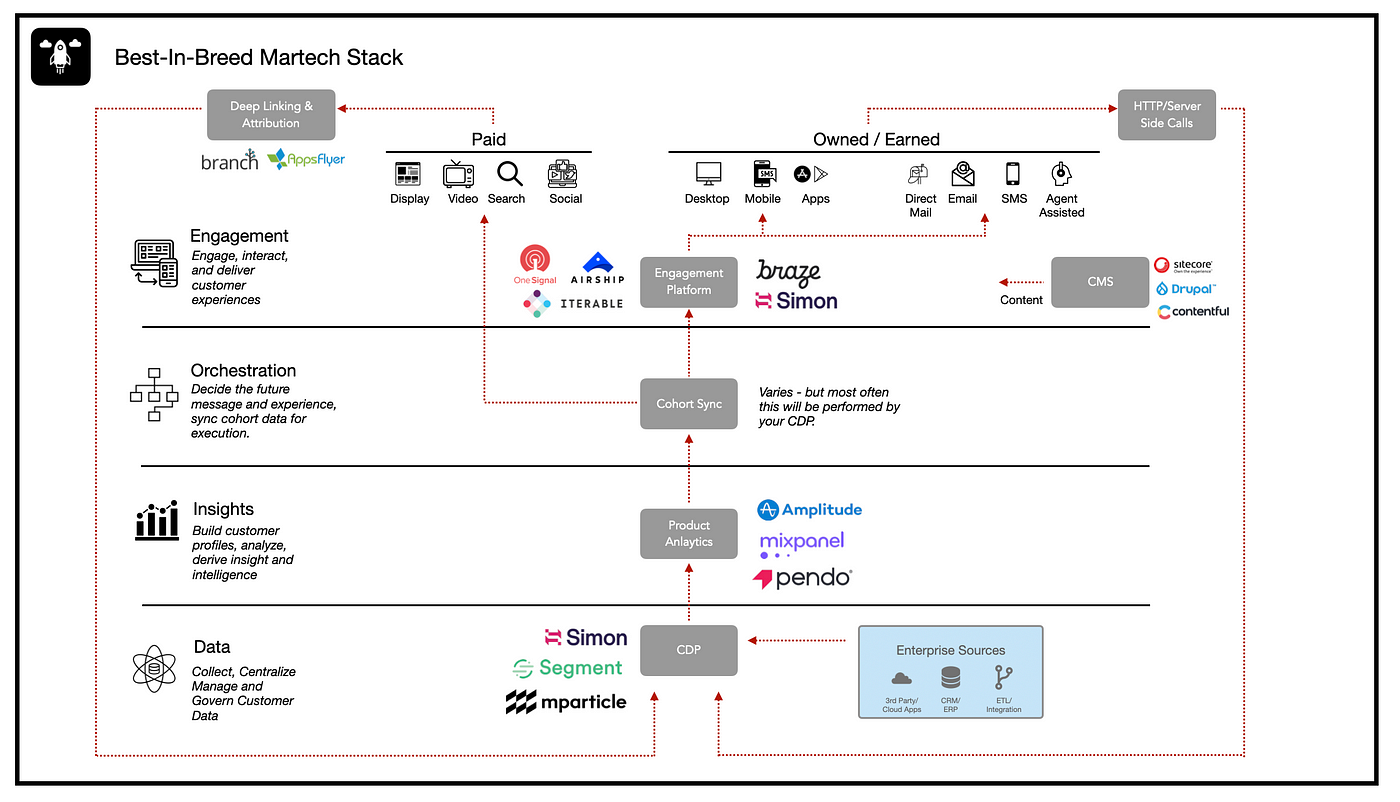
If we take a step back from the complicated diagrams above, and look at the foundational elements to a best-in-breed martech stack and the core problem they solve for teams that use them, we get a visual like the following:
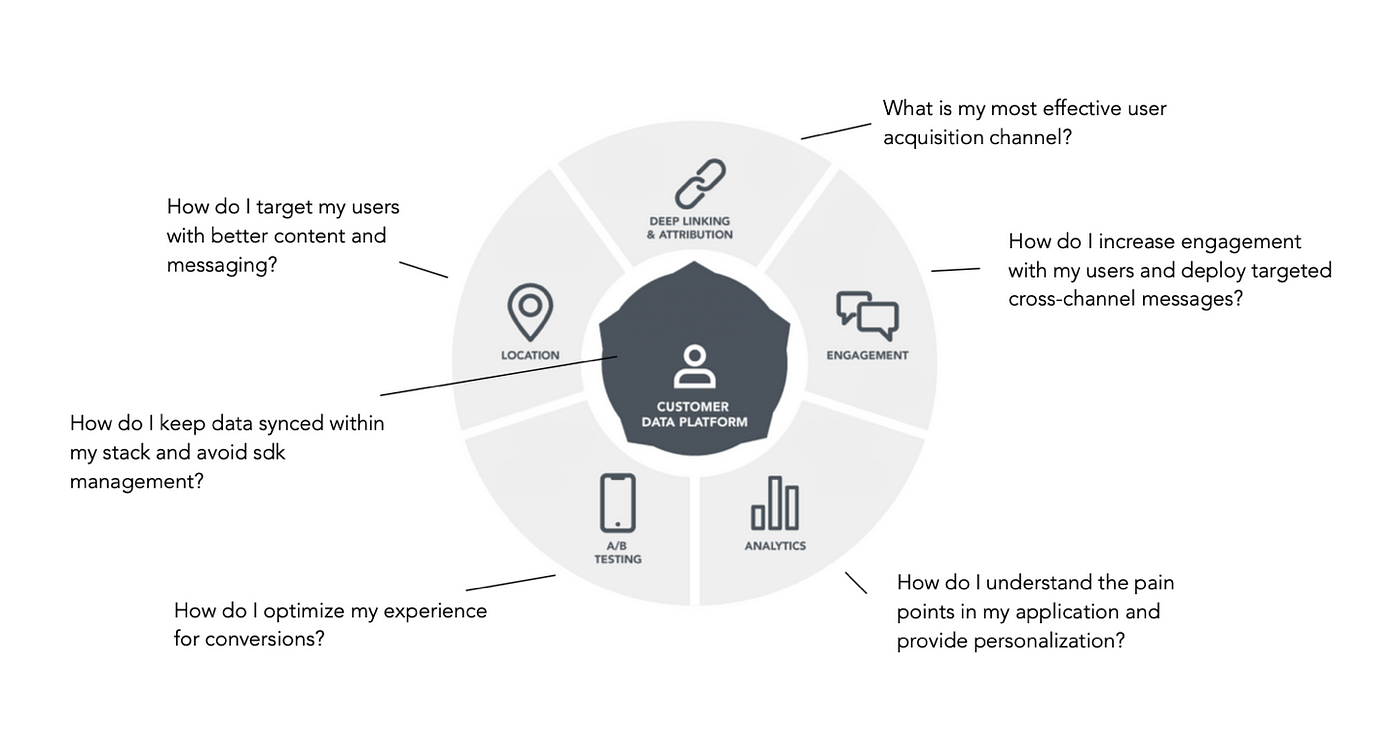
The Structure of a Progressive Martech Team
The structure of a progressive martech team can be thought of as a superpower of sorts due to the strength it gives them to support the customer experience across the entire customer lifecycle. There are generally three tpyes of team stuctures we see in the martech world:
- Siloed
- Semi-Siloed
- Cross-Functional
Siloed martech teams are best characterized as a group whose marketing and product management functions do not engage with each other on a regular basis and their activities and strategies are planned and executed independently. One of the drawbacks to this team structure is that teams can’t fill each other gaps, mainly marketing teams lack of tech skills and product management teams lack of skills to create copy and art for offers and promotions.
Semi-siloed martech teams operate in a manner where they only have one leg into the big girl/boy pants they need to have on to be a progressive maretch team. In this dynamic we will see that product management and marketing teams may meet with some type of regularity and they might have some initiatives in place together to come closer together to deliver better outcomes. However, the bulk of their activity is done in separate systems that don’t have data synced seamlessly between the two.
Progressive martech teams operate in a truly cross-functional manner. They have a common metrics framework that is linked to a north star, enabling them to all understand the true performance of their collective team efforts. In this dynamic, product management teams are consulted by the marketing teams during the creation of a campaign for example. On the flip side, product management teams consult their marketing counterparts when creating a new feature with the sole goal of making each others execution stronger.
How Progressive Martech Teams Use Data
Data is the fuel that powers a martech stack and its quality and richness has everything to do with what kind of performance you can expect from your team and the stack that supports them. A Formula 1 driver wouldn’t expect to win if you put regular gasoline into the car before the race, why would you expect anything different if teams don’t have a single view of their customers that is readily available from each team’s main tool.
Both marketing and product management organizations within a progressive martech team operate as a single unit, but the main tools each group uses on a day-to-day basis is quite different. The marketing team will find themselves inside of the engagement platform which orchestrates the campaigns as opposed to the product management team which we will find spending most of their time in the product analytics tool which shows customer behavior on top of the digital products they manage. The key here is that both these teams are looking at the same data (customer events and properties) within their respective tools as it is synced through their CDP platform.
Another thing that must be mentioned about a progressive martech team is that they integrate first party customer data back to Google, Facebook and other ad networks for retargeting and new customer acquisition purposes via their CDP. This is a major key to a progressive martech stack, and it bridges the data gap between marketing, product management and advertising teams that so commonly exists today. This gap leads to siloed thinking and an inconsistent customer experience. For example, if we look at Simon Data’s catalog, an industry leader in the CDP space, we see that this is simply the click of a button once your customer data is being properly fed into the tool (5).
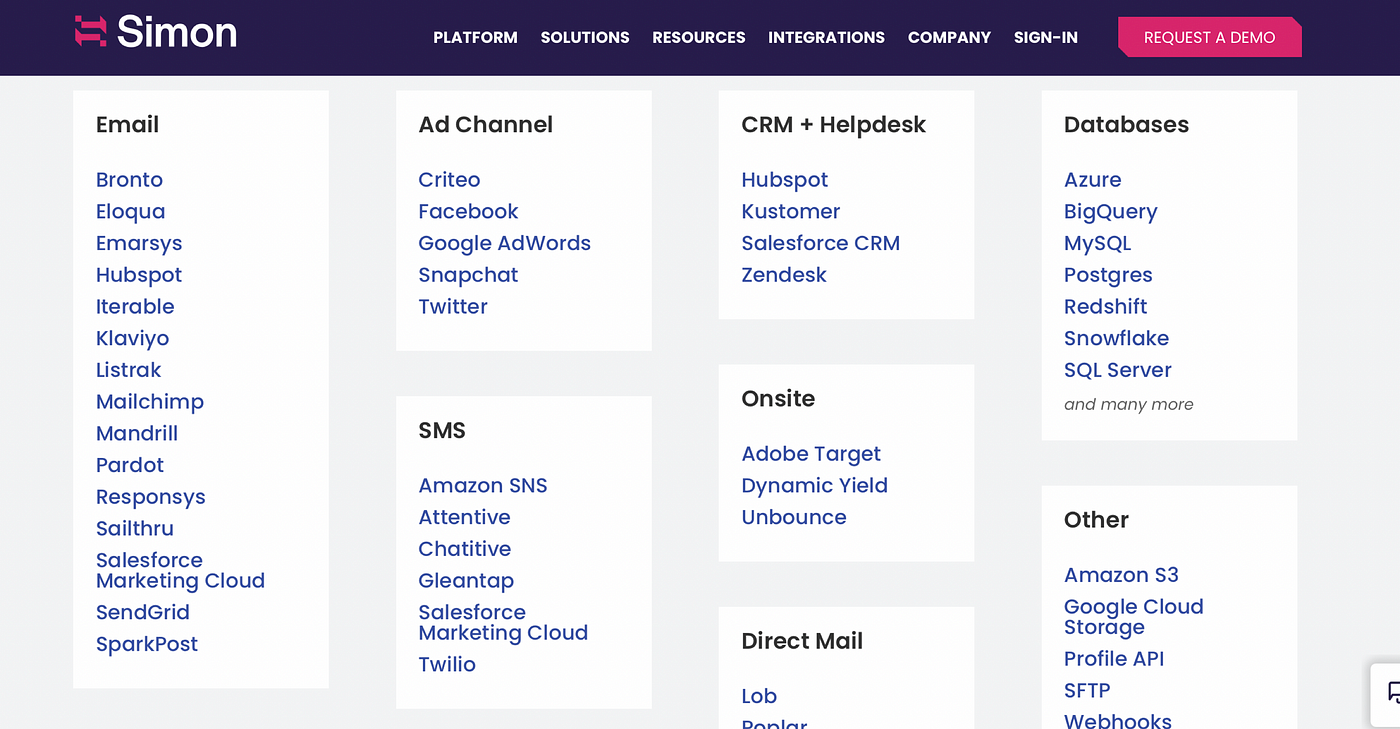
How to Use it to Drive Insane Growth
Businesses that put best-in-breed tools in place and cultivate truly cross-functional teams with the right data are able to orchestrate their operations to balance and blend campaigns and product features with the speed and functionality needed to meet the high customer expectations we see today.
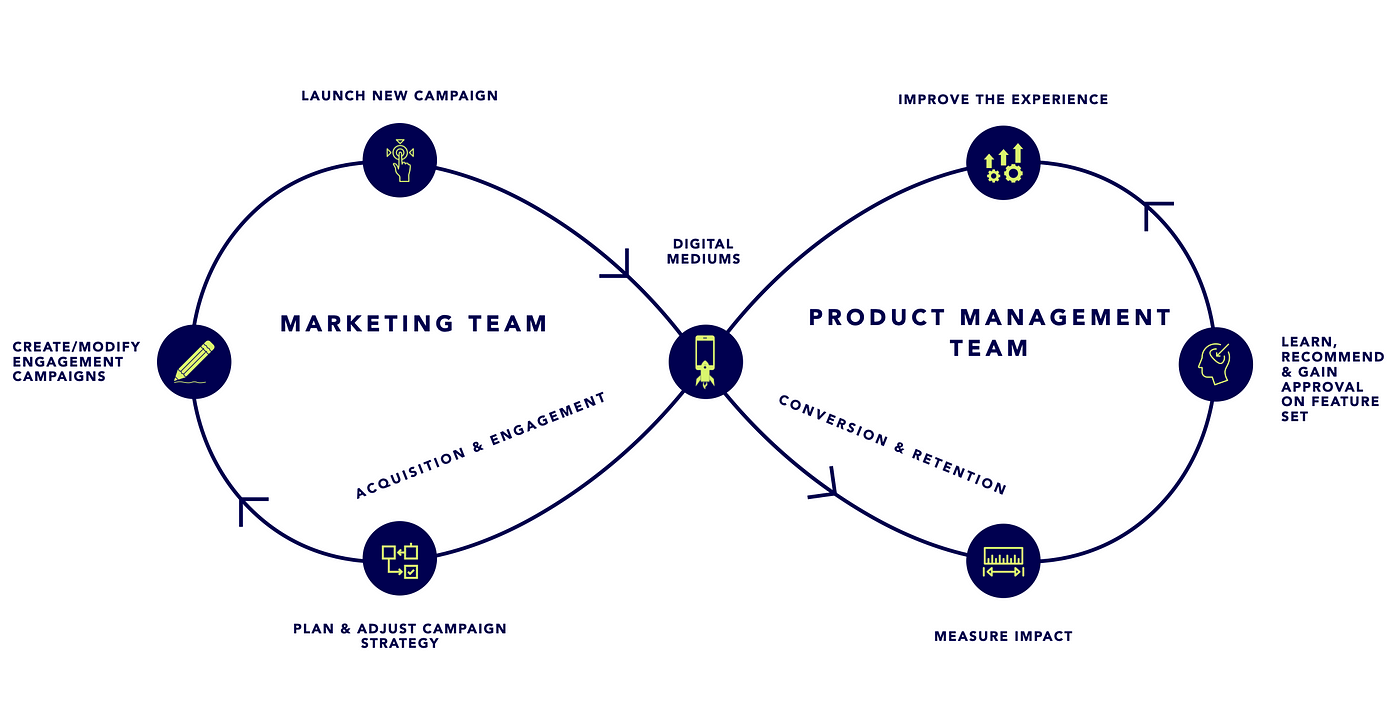
If we go a step further with the core foundational elements we defined above and look at how data flows through the system and what key functions the tooling elements provide, the resulting visual looks like this:
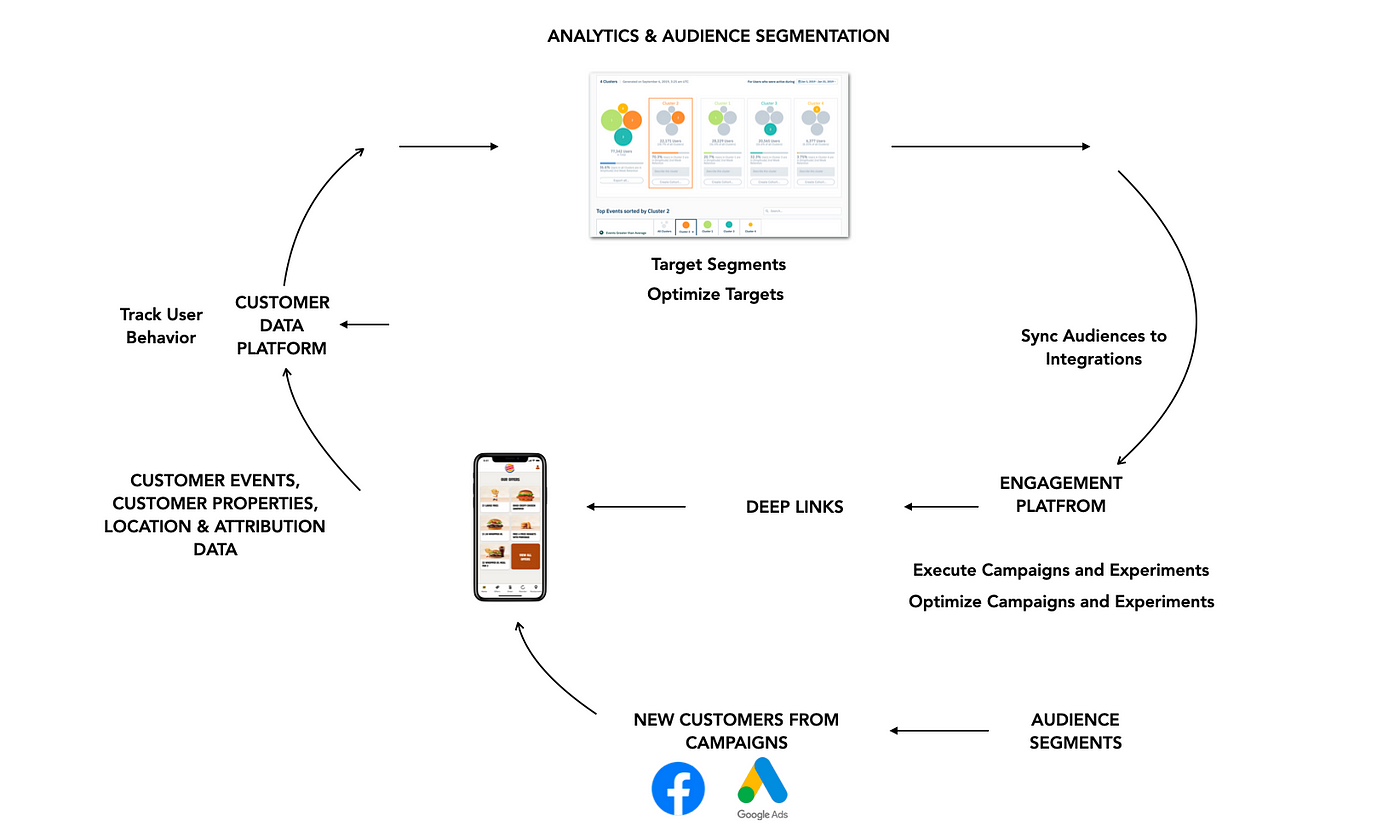
And finally, if we step one level deeper and look at a single person moving from a first-time brand interaction and into a high value customer segment used to expand future business through server-side activation, the resulting visual looks like this:
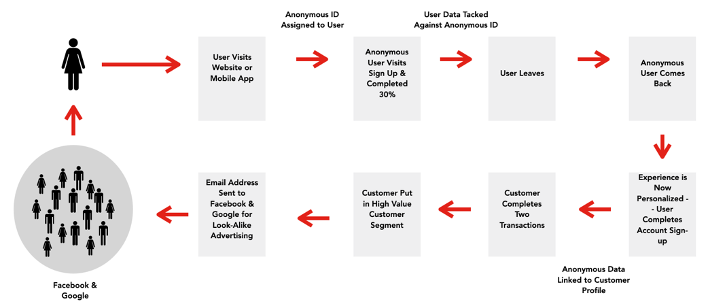
For teams looking to grow into a progressive state, we suggest following these four steps:
- Unite marketing and product management teams with a common metric framework and make sure they are regularly consulting with each other on campaigns and product features.
- Task this united team to design, evaluate and implement a best in breed martech stack.
- Ensure that customer data from all sources that contain this data is fed into a CDP and that the quality of this data is top notch.
- Execute in a cross-functional manner where campaigns and features are thoughtfully linked and improved through a test and learn approach.
In summary, progressive martech isn’t just a set of software solutions that marketers use to drive growth but rather a broadened perspective and way of working across tools, teams, data and execution. Progressive martech teams select best-in-breed tools, work as a cohesive unit across marketing and product management, have a truly unified customer view that is available from all tools and execute to orchestrate this platform to rapidly deploy new campaigns and features. The byproduct of this new working dynamic will be seen in improved performance within acquisition, conversion, engagement, and retention metric categories. Finally, becoming a progressive martech-led organization is relatively straight forward once the chains of legacy systems have been broken, letting organizations move into the future without an albatross around their neck in the form of legacy components.
Sources
#1 — Definition of Marketing Technology
#2 — An Introduction to Building Your Own Martech Stack
#3 — Adobe Experience Cloud Architecture Diagram
#4 — What I’ve Learned from Seeing & Designing Dozens of Consumer Marketing Tech Stacks

